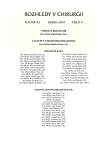Long-term follow-up results after open small umbilical hernia repairs
Authors:
O. Malý 1,2; O. Sotona 1
Authors‘ workplace:
Chirurgická klinika Fakultní nemocnice Hradec Králové, přednosta: Prof. MUDr. A. Ferko, CSc.
1; Fakulta vojenského zdravotnictví Univerzity obrany v Brně, děkan: Doc. MUDr. J. Páral, Ph. D.
2
Published in:
Rozhl. Chir., 2014, roč. 93, č. 4, s. 208-211.
Category:
Original articles
Overview
Introduction:
Adult umbilical hernia is a common surgical condition in the fifth and sixth decade of life. Despite the high frequency of umbilical hernia repairs, disappointingly high recurrence rates after simple suture repairs are reported, amounting to 54%. In addition, it is reported that with the rising frequency of recurrences, the size of the hernial sac and gate gradually increases. Therefore we decided to find out the incidence of recurrences after operative repair of an umbilical hernia at our department.
Material and methods:
Patient data for this retrospective study focusing on the period between 2006 and 2010 were obtained from the electronic hospital database. Patients with umbilical hernia and the abdominal wall defect up to 3 cm who underwent primary elective procedure were included in the study. Patients with incisional hernias were excluded. All patients were contacted at least 3 years after operation to confirm the accuracy of data.
Results:
A total of 127 patients were included in this study. In the abovementioned period, no mesh was used during primary surgery in any of the patients. Recurrence occurred in a total of 13.4% of patients. Approximately 40% of patients with the first recurrence were re-operated at our department, 30% of patients were re-operated in other hospitals and the rest have not sought medical attention in respect of the recurrence. Patients with recurrence did not differ from the others as regards age, body mass index or surgical site infection development.
Conclusion:
Due to the high recurrence rates after operative sutures of the umbilical hernias there is a need to thoroughly consider the potential risk factors such as the body mass index and the abdominal wall defect size. Therefore, it is recommended to use the mesh more widely during primary surgery, especially in obese patients with BMI over 30 and the wall defect size exceeding 3 cm. The question remains whether to use the mesh in all overweight patients and with wall defect smaller than 3 cm.
Key words:
umbilical hernia – suture repair – Mayo repair – hernia recurrence – mesh
Sources
1. Harmel RP. Umbilical hernia. Philadelphia, Pennsylvania, JB Lippincott 1989:347–352.
2. Jackson OJ, Moglen LH. Umbilical hernia: a retrospective study. Calif Med 1970;113:8–11.
3. Kulah B, Kulacoglu IH, Oruc MT, Duygun AP, Moran M, et al. Presentation and outcome of incarcerated external hernias in adults. Am J Surg. 2001;181:101–4.
4. Schumacher OP, Peiper C, Lörken M, Schumpelick V. Long-term results after Spitzy’s umbilical hernia repair. Der Chirurg 2003; 74:50–54.
5. Luijendijk RW, Lemmen MH, Hop WC, Wereldsma JC. Incisional hernia recurrence following „vest-over-pants“ or vertical Mayo repair of primary hernias of the midline. World J Surg 1997;21:62–5.
6. Arroyo A, Garcia P, Perez F, Andreu J, Candela F, et al. Randomized clinical trial comparing suture and mesh repair of umbilical hernia in adults. British Journal of Surgery 2001;88: 1321–1323.
7. Arroyo AS, Pérez F, Serrano P, Costa D, Oliver I, et al. Is prosthetic umbilical hernia repair bound to replace primary herniorrhaphy in the adult patient? Hernia 2002;6:175–177.
8. Lomanto D, Iyer SG, Shabbir A, Cheah WK. Laparoscopic versus open ventral hernia mesh repair: a prospective study. Surgical Endoscopy 2006;20:1030–1035.
9. Bowley DMG, Kingsnorth AN. Umbilical hernia, Mayo or mesh? Hernia 2000;4:195–196.
10. Burger JW, Luijendijk RW, Wim C, Jens A, Emiel G, et al. Long-term follow-up of a randomized controlled trial of suture versus mesh repair of incisional hernia. Annals of Surgery 2004;240: 578–585.
11. Luijendijk RW, Hop WC, Van Den Tol M, De Lange DC, Braaksma MM, el al. A comparison of suture repair with mesh repair for incisional hernia. New England Journal of Medicine 2000;343: 392–398.
12. Halm JA, Heisterkamp J, Veen HF, Weidema WF. Long-term follow-up after umbilical hernia repair: are there risk factors for recurrence after simple and mesh repair? Hernia 2005;9:334–337.
13. Lau H, Patil NG. Umbilical hernia in adults. Surgical Endoscopy 2003;17:2016–2020.
14. Belsham PA, Kurzer NG, Kark PA. Tension-free mesh repair of umbilical hernia as a day case using local anaesthesia. Hernia 2004;8:104–107.
15. Kulacoglu H, Yazicioglu D, Ozyaylali I. Prosthetic repair of umbilical hernias in adults with local anesthesia in a day-case setting: a comprehensive report from a specialized hernia center. Hernia 2012;16:163–170.
16. Sanjay P, Reid TD, Davies EL, Arumugam PJ, Woodward A, et al. Retrospective comparison of mesh and sutured repair for adult umbilical hernias: a comprehensive report from a specialized hernia center. Hernia 2005;9:248–51.
17. Jezupors A, Mihelsons M. The analysis of infection after polypropylene mesh repair of abdominal wall hernia. World Journal of Surgery 2006;30:2270–2278.
Labels
Surgery Orthopaedics Trauma surgeryArticle was published in
Perspectives in Surgery

2014 Issue 4
- Metamizole vs. Tramadol in Postoperative Analgesia
- Metamizole at a Glance and in Practice – Effective Non-Opioid Analgesic for All Ages
- Possibilities of Using Metamizole in the Treatment of Acute Primary Headaches
Most read in this issue
- Acute periproctal abscesses
- Surgical rectocele repair – many techniques, few unambiguous conclusions
- Complications of hemorrhoids
- Pulmonary metastases – 12-year experience with surgical therapy
